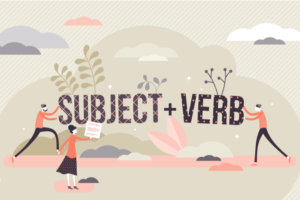Sentence Starter Tips to Strengthen Your Writing
Nov 6, 2024

What is a sentence starter? Sentence starters’ main function is to “introduce” the reader to the meaning of the sentence. They denote a logical connection between the original thought and the final one, thereby giving the text smoothness and integrity. Sentence starters are like road signs that help the reader navigate the text.
The easiest way to connect sentences is to use conjunctive words: for, and, nor, but, or, yet, so. They help to combine not only single words but entire phrases. For example, when you use the conjunction “so” (meaning “therefore”), you are essentially saying, “we can draw this conclusion from the above”.
When you use “or” at the start of your sentence, you are saying “there is also such a variant.” The most commonly used conjunction “and” is also the weakest in terms of conveying meaning; it simply combines “something” and “something else.” Conjunctions play the role of ligaments, but they are not enough to give the text coherence and expressiveness.
Sentence Starters Take the Stage
This is where sentence starters come to the rescue! They logically connect sentences or their fragments with each other. Sentence starters are classified according to the type of logical connection between separate sentences or parts of a paragraph. Let’s consider the most frequently used ones.
- Example: for example, for instance, such as, specifically (namely)
- Consequence: therefore, hence, thus, so, as a result, to this end, consequently
- Contrast: nevertheless, however, but, on the other hand, in contrast (for comparison), on the contrary, conversely (vice versa), at the same time, still, nevertheless, although, even though, despite, in spite of, despite the fact that
- Similarity: likewise, similarly, just as, for the same token, equally
- Concession: although, even though, of course, granted, provided that, taking into account, while
- Addition: in addition, additionally, moreover, also, furthermore
- Emphasis: more importantly, most importantly, chiefly, indeed, in fact, primarily, no doubt
- Repetition: again, in other words, in effect, in fact, that is, in short
- Time indication: at last, eventually, before, earlier, after, afterward, next, finally, during, then, when, as of, initially
- Specifying a location: to the right, to the left, in the background, in the foreground, in the distance
- Conclusion: thus, finally, in the end, in conclusion, to conclude with, at last
Sentence Starters and What They Do
You may be astounded by how much better your speech or written text can become by using sentence starters correctly. Sentence starters act like a glue that holds sentences and ideas together, helping you and your reader move smoothly and naturally from one part of the text to the other. For example:
Source text: Graduating successfully from a college often becomes a difficult mission for students. Some high schools and colleges offer assistance programs meant to help students. Such programs consist of teacher tutoring and individual counseling. Academic institutions need to offer more programs to help students successfully graduate.
Improved text: Graduating successfully from a college often becomes a difficult mission for students. Thus, some high schools and colleges offer assistance programs meant to help students, such as teacher tutoring and individual counseling. Nevertheless, academic institutions need to offer more programs to help students successfully graduate
Adding just a few sentence starters and conjunctive words helps to indicate the relationship between different parts of a paragraph and improves the overall flow of the text. Notice that conclusion starters differ from the opening words in the introduction sentences.
Conclusion Sentence Starters to Use
Conclusion starters differ from similar elements in the introduction or body part as they usually summarize everything said before. Moreover, concluding sentences don’t present any new information, so conclusion starters must show readers that you will summarize what was said before. Below are good ways to start sentences in the concluding part:
- In summary
- To wrap things up
- In conclusion
- In short
- Overall
A good sentence starter should be short so you don’t focus attention on the opening words and move straight to the point. These are transition elements leading to the main part, so you don’t need too many words to start a sentence.
Three Tips to Improve Your Sentence Starter Skills
- Avoid overusing sentence starters. Sentence starters should guide the reader, but overuse can have the opposite effect and make the text confusing. Moreover, by using too many sentence starters you can make a bad impression on your readers, especially when used in academic and business texts.
- Use sentence starters to revive interest in your text. Often, when your text has several long paragraphs or just one long paragraph or a difficult concept, the reader will benefit from a little shaking up. For instance, using the word ‘hey’, or ‘indeed’, can produce such an effect.
- Use different sentence starters. Always keep in your arsenal at least several synonyms and mix them wisely throughout your text. On the contrary, if you keep using the same word (for example, ‘in fact’) all over your text, this will send a very bad signal to your audience (that you may have a very poor vocabulary).
You can also improve your sentence starter skills by paying attention to the occurrence of incomplete sentences and the placement of punctuation marks when using introductory words.
In general, sentence starters are a great tool for constructing logical and coherent statements. Similar to road signs, they help the reader navigate the text. How often do you use sentence starters when constructing sentences in the English language? Try them out using tips in this article and your academic grades will improve!

Time is precious
don’t waste it!
Get instant essay
writing help!






